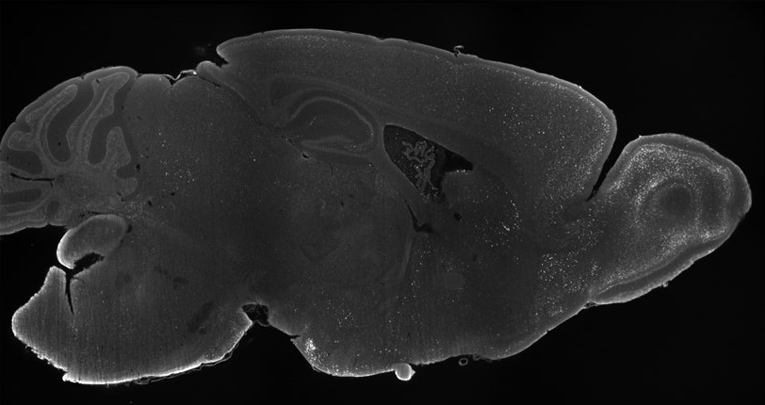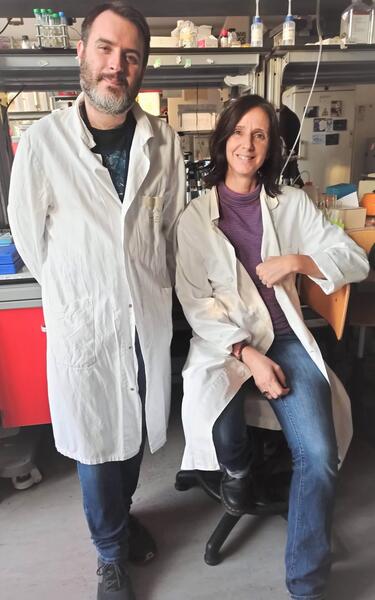
Image showing an adult mouse brain slice acquired via light-sheet microscopy. The sample underdid a tissue-clearing procedure to make it transparent coupled with immunolabelling of the cFos immediate early gene.
This procedure allows for the identification of brain areas activated by olfactory and acoustic stimuli disapplied by males during courtship.
Marie-Sklodovska Curie
Postdoctoral fellowship
How do we find love?
Despite courtship has been largely characterized from an ethological point of view, how the brain orchestrates this complex mechanism is completely unknown. Dr Stefano Zucca will try to find the answer thanks to his project, awarded with the European Marie-Sklodovska Curie Postdoctoral fellowship . Dr Zucca – with the support of prof. Serena Bovetti - aims at understanding how the brain integrates information from multiple sensory modalities, by using naturalistic and ethological fundamental behaviours, such as courtship and mate selection, and where in the brain the information coming from acoustic and olfactory courtship cues isintegrated.
Sounds, smells, colours. A multisensory courtship
The ability to find and select the best partner is one of the main processes through which evolution occurs. Animals across the whole Animal Kingdom have developed their own way of attracting and selecting their best mating partner. In most of the species, males usually attract females through a complex and peculiar behaviour called courtship, where they display attractive cues from multiple sensory modalities (sounds, colours, smells, …).
Females can perceive, integrate and use the information hidden in these sensory cues to understand the quality of a male and select their most suitable mating partner. A peculiar aspect of courtship displays is that they almost always rely on at least two different sensory modalities.
Do you know that also mice sing?
Mice are not an exception: males attract females by combining olfactory cues, such as the release of pheromones and attractive molecules contained in their urine, with the production of complex songs in the ultrasound frequency range. Females integrate and use these stimuli to find and select their best mating partner. It has been shown that females can discriminate between songs from different males, but only if they are simultaneously exposed to an attractive olfactory cue. This indicates that odours and sounds interact and help females to discriminate among different males to find the most suitable one.
How and where does the brain stores and integrates information from multiple sensory modalities?
Despite this behaviour has been largely characterized from an ethological point of view, how the brain orchestrates this complex mechanism is completely unknown.
Dr Stefano Zucca
,
NICO research group of Adult neurogenesis
,
will try to find the answer thanks to his project, awarded with the
European Marie-Sklodovska Curie Postdoctoral fellowship
.
Dr Zucca – with the support of
prof. Serena Bovetti
- aims at understanding
how
the brain integrates information from multiple sensory modalities, by using naturalistic and ethological fundamental behaviours, such as courtship and mate selection, and
where
in the brain the information coming from acoustic and olfactory courtship cues isintegrated.
Additionally, the project aims at discovering the neuronal mechanisms through which olfaction helps discriminatemale love songs. Forthis purpose, dr. Zucca will use a multidisciplinary approach by combining anatomical, optical, behavioural and electrophysiological approaches. Overall, the project will reveal how our brain integrates information from multiple sensory modalities to drive vital behaviours.
Schematic representation of the experimental procedure to map the brain areas involved in the discrimination and integration of olfactory and acoustic cues displayed during courtship behaviours.










